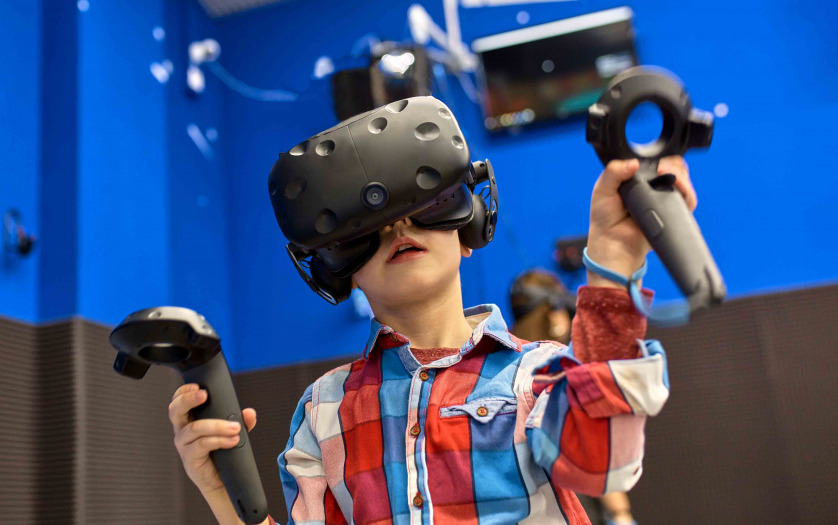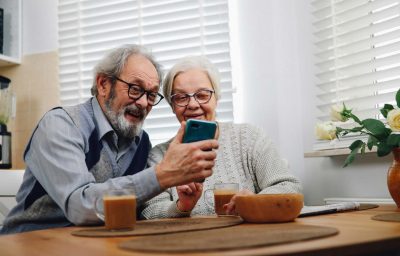
A group of computer science and engineering students spent the 2019-20 school year making a virtual reality for children with cerebral palsy. For their Senior Design capstone project, the students collaborated with the University of Nebraska Medical Center Munroe-Meyer Institute on a virtual reality project that will help children with cerebral palsy.
The project is a virtual reality game designed to emulate hand-arm bimanual intensive therapy, which induces specific motions using both arms to improve the motor capabilities of patients.
“Sometimes these individuals have one side of the body that’s more affected than the other, so what this program is aiming to do is provide games that require them to use both arms equally to succeed,” said James Gehringer, project sponsor and research assistant professor.
Gehringer oversees the Virtual Reality Laboratory, which specializes in research that uses cutting-edge technology to help individuals with intellectual and developmental disabilities. He approached the Senior Design team hoping to collaborate on a product that would make the HABIT therapy sessions more fun for young patients.
“This is a green light therapy that’s been proven to work for individuals, but one of the major limitations is that because it’s so long and we’re working with kids, it can be hard to keep their engagement,” Gehringer said. “We’re hoping this helps improve that.”
The initial project concept was a virtual escape room, but students expanded on the idea to create a multi-room game complete with its own narrative as well as additional mini games and puzzles. The game is programmed to change randomly with each replay and can also be adjusted manually based on patient needs. A Therapist UI feature allows therapists to scale the game to each individual’s ability level before and during a playing session.
“There are a lot of accessibility features we considered,” said Ethan Penn, a team leader. “The therapist can change how many blocks they have to put into the reactor before they win, the range of movements that are allowable, how precise they have to be. Some people may have problems pressing the back trigger, and in cases when that can’t be done, there are other options.”
To develop game concepts and puzzles, students worked with Gehringer to learn more about what types of physical movements therapists focused on during treatments, many of which simulated everyday activities such as putting on a sweater or chopping food. Students modeled game premises around similar movements and shared them with Gehringer and therapists, who then allowed children to play-test demos during therapy sessions.
Senior Design is currently accepting new projects and sponsor applications for the 2020-21 school year. Apply online by June 26, and learn more about the Senior Design program.








